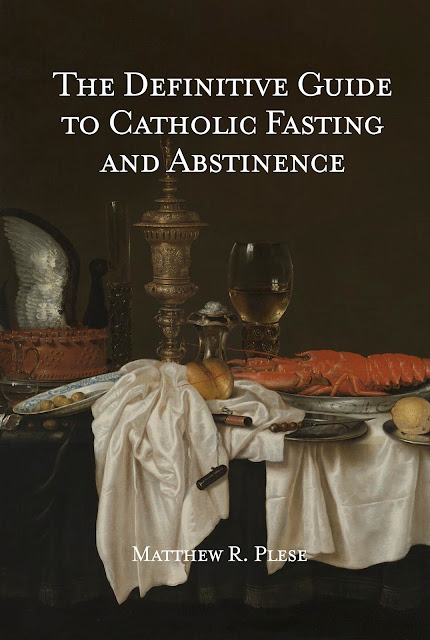Simple (1954 Calendar): January 2nd
Like St. John the Evangelist and the Holy Innocents, the Octave of St. Stephen was a simple octave. The collect prayer for this Octave was as a result only said on the Octave Day and not on the intervening days within the Octave.
When today is celebrated as the Holy Name of Jesus (on years when neither January 2nd, 3rd, 4th, nor 5th falls on a Sunday), the Mass is said for the Holy Name and not said for the Octave of St. Stephen. Rather, a second oration would be added for this Octave Day and a commemoration would be made during the praying of Lauds. Before the 1911 changes under Pope St. Pius X, the Holy Name of Jesus was always kept on the Second Sunday after Epiphany as one of the three Octave Days of the Comites, all previously ranked as Doubles, would have occupied this Sunday.
When today is celebrated as the Holy Name of Jesus (on years when neither January 2nd, 3rd, 4th, nor 5th falls on a Sunday), the Mass is said for the Holy Name and not said for the Octave of St. Stephen. Rather, a second oration would be added for this Octave Day and a commemoration would be made during the praying of Lauds. Before the 1911 changes under Pope St. Pius X, the Holy Name of Jesus was always kept on the Second Sunday after Epiphany as one of the three Octave Days of the Comites, all previously ranked as Doubles, would have occupied this Sunday.
Taken from Dom Gueranger's Liturgical Year:
Yesterday we finished the Octave of the Birth of Jesus; to-day we shall finish the Octave of St Stephen; but this without losing sight one moment of the Divine Babe, whose Court is formed by Stephen, John the Beloved Disciple, the Holy Innocents, and St Thomas of Canterbury. In five days we shall see the Magi prostrate before the Crib of the new-born King; they are already on the way, and the Star is advancing towards Bethlehem. Let us spend the interval in reconsidering how great is the glory of our Emmanuel in his having lavished such extraordinary favours on these Saints whom he has chosen to be near him at his first coming into the world.
Let us begin with Stephen, for this is the last day of the Octave dedicated to him by the Church. We must take leave of him now till the month of August, when we shall again meet him on the Feast of the Finding of his Relics.
In a sermon which was for a long time thought to have been written by St Augustine, we find it mentioned that St Stephen was in the flower of his youth when he was called by the Apostles to receive the sacred character of deaconship. Six others were ordained deacons with him; and these seven, whose office was to minister at the Altar here below, represented the seven Angels, whom St John saw standing near the Altar in heaven. Stephen was appointed as the head of the Seven, and St Irenæus, who lived in the second century, calls him the Arch-Deacon.
The characteristic virtue of a Deacon is fidelity. Hence, he is intrusted with the care of the treasures of the Church, treasures which consist not merely in the alms destined for the poor, but in that which is the most precious thing in heaven and earth—the Blood of our Lord Jesus Christ, of which the Deacon is the minister, in virtue of his Order. For this reason, the Apostle St Paul, in his first Epistle to Timothy, bids the Deacons hold the Mystery of Faith in a pure conscience.[1]
It was, therefore, more than an appropriate coincidence, that the first of all the Martyrs was a Deacon, for Martyrdom is the great proof of fidelity, and fidelity is the official virtue of the Diaconate. This same truth is still more strongly impressed upon us by the fact that the three who stand pre-eminent amongst the Martyrs of Christ are vested in the holy Dalmatic—the three glorious Deacons: Stephen, the glory of Jerusalem; Laurence, the pride of Rome; and Vincent, of whom Spain so justly boasts. The present holy season gives us Stephen, who has been gladdening us with his festal presence ever since Christmas Day, and Vincent, whose feast falls on January 22. Laurence will come to us, with his rich waving Palm, in the sunny month of August; and Stephen, in the same month, will visit us, a second time, in the Feast of the Finding of his Relics.
With the intention of paying respect to the Holy Order of Deaconship in the person of its first representative, it is a custom in a great many Churches, on the Feast of St Stephen, that Deacons should fulfil every office which is not beyond their Order. For example, the Chanter yields his staff of office to a Deacon; the Choristers, who assist the Chanter, are also Deacons, vested in Dalmatics; and the Epistle of the Mass is sung by a Deacon, because it is the passage from the Acts of the Apostles which relates the history of the holy Martyr’s death.
The institution of St Stephen’s Feast, and its being fixed on the day immediately following that of our Lord’s Birth, are so ancient that it is impossible to assign their date. The Apostolic Constitutions, which were compiled at the latest towards the close of the third century, mention this Feast as already established, and that, too, on the morrow of Christmas Day. St Gregory of Nyssa and St Asterius of Amasea, both of them earlier than the miraculous discovery of the Holy Deacon’s Relics, have left us Homilies for the Feast of St Stephen, in which they lay stress on the circumstance of its having the honour to be kept the very day after the solemnity of Christmas. With regard to its Octave, the institution is less ancient, though the date cannot be defined. Amalarius, who wrote in the ninth century, speaks of this Octave as already established; and Notker's Martyrology, compiled in the tenth century, makes express mention of it.
But how comes it that the Feast of a mere Deacon has been thus honoured, whilst almost all those of the Apostles have no Octave? The rule followed by the Church in her Liturgy is to give more or less solemnity to the Feasts of the Saints, according to the importance of the services they rendered to mankind. Thus it is that the honour she pays to St Jerome, for example, who was only a Priest, is more marked than that she gives to a great number of holy Popes. It is her gratitude which guides her in assigning to the Saints their respective rank in her Calendar, and the devotion of the Faithful to the saintly benefactors whom she now venerates as members of the Church Triumphant is thus regulated by a safe standard. St Stephen led the way to Martyrdom; his example inaugurated that sublime witnessing by shedding one’s own blood, which is the very strength of the Church, ratifies the truths she teaches to the world, and confirms the hopes of eternal reward promised by those truths. Glory, then, and honour to the Prince of Martyrs! As long as time shall last, so long shall the Church on earth celebrate the name of Stephen, who was the first to shed his blood for the God who died on Calvary!
Collect:
O God, the teacher and ruler of them that are thy ministers, who didst adorn the early days of thy Church by the ministry and precious blood of blessed Stephen the Levite; grant, we beseech thee, that meeting with pardon at the hour of our death, we may deserve to follow his example, and be aided by his intercession. Through Jesus Christ our Lord.


























